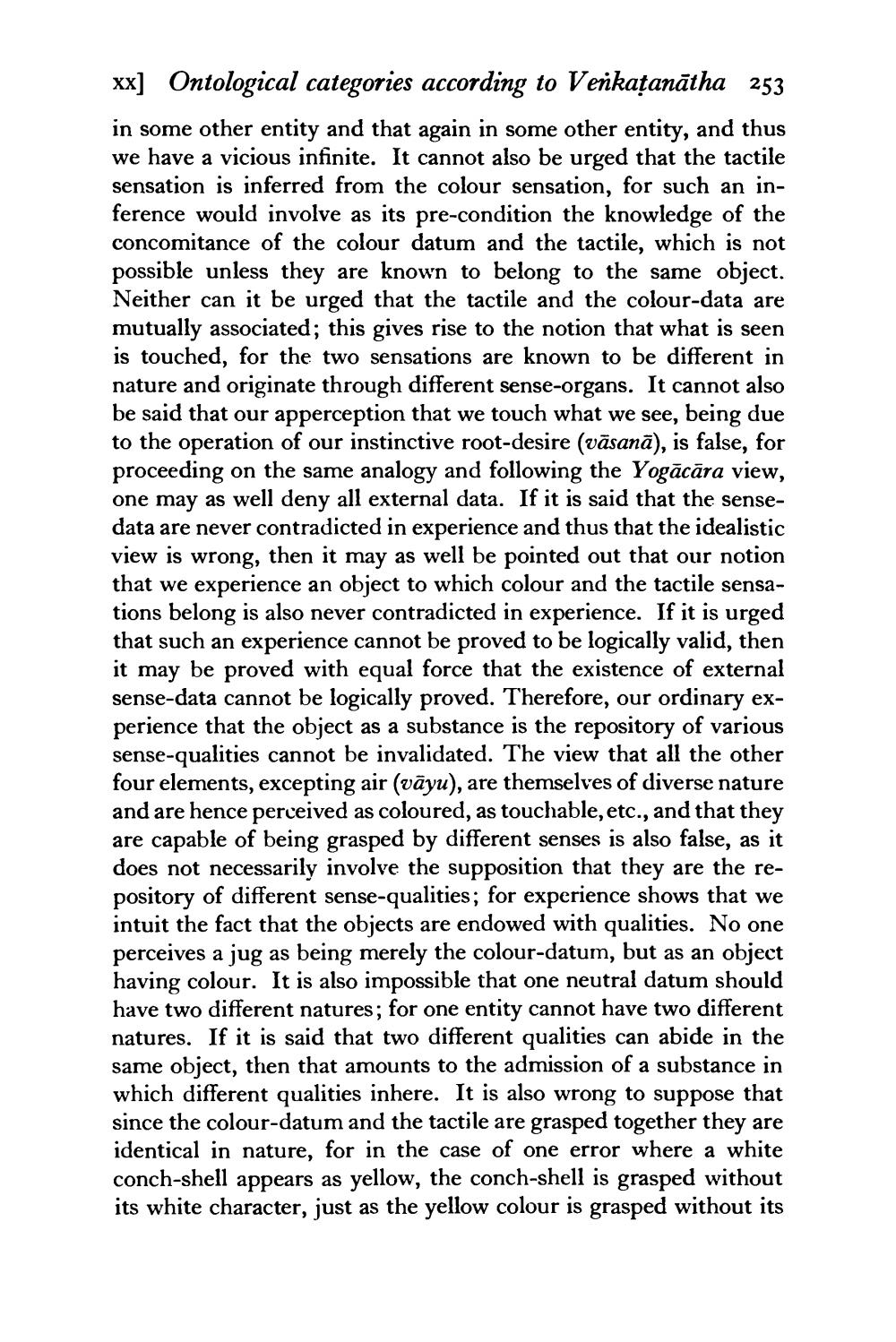________________
xx] Ontological categories according to Venkațanātha 253 in some other entity and that again in some other entity, and thus we have a vicious infinite. It cannot also be urged that the tactile sensation is inferred from the colour sensation, for such an inference would involve as its pre-condition the knowledge of the concomitance of the colour datum and the tactile, which is not possible unless they are known to belong to the same object. Neither can it be urged that the tactile and the colour-data are mutually associated; this gives rise to the notion that what is seen is touched, for the two sensations are known to be different in nature and originate through different sense-organs. It cannot also be said that our apperception that we touch what we see, being due to the operation of our instinctive root-desire (vāsanā), is false, for proceeding on the same analogy and following the Yogācāra view, one may as well deny all external data. If it is said that the sensedata are never contradicted in experience and thus that the idealistic view is wrong, then it may as well be pointed out that our notion that we experience an object to which colour and the tactile sensations belong is also never contradicted in experience. If it is urged that such an experience cannot be proved to be logically valid, then it may be proved with equal force that the existence of external sense-data cannot be logically proved. Therefore, our ordinary experience that the object as a substance is the repository of various sense-qualities cannot be invalidated. The view that all the other four elements, excepting air (vāyu), are themselves of diverse nature and are hence perceived as coloured, as touchable, etc., and that they are capable of being grasped by different senses is also false, as it does not necessarily involve the supposition that they are the repository of different sense-qualities; for experience shows that we intuit the fact that the objects are endowed with qualities. No one perceives a jug as being merely the colour-datum, but as an object having colour. It is also impossible that one neutral datum should have two different natures; for one entity cannot have two different natures. If it is said that two different qualities can abide in the same object, then that amounts to the admission of a substance in which different qualities inhere. It is also wrong to suppose that since the colour-datum and the tactile are grasped together they are identical in nature, for in the case of one error where a white conch-shell appears as yellow, the conch-shell is grasped without its white character, just as the yellow colour is grasped without its




